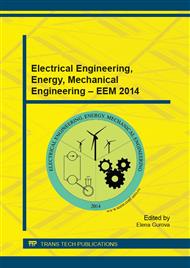p.444
p.452
p.457
p.461
p.466
p.472
p.478
p.482
p.487
Optimization of a Specimen Size for the Determination of the Diffusible Hydrogen Content in Metals
Abstract:
Specimens of various sizes are used to determine hydrogen content in deposited metals in such standards as ISO 3690, AWS A 4.3, and GOST 23338 while measuring methods are the same. It causes problems in comparison of experimental results and brings up the following question: what kind of specimen size is optimal to determine hydrogen content An optimal specimen size was estimated using a calculation method. Experimental and calculation results obtained by using specimens with estimated dimensions were compared to the results obtained by using the specimen with dimensions of 100*25*8 mm to determine hydrogen content in a deposited metal.
Info:
Periodical:
Pages:
466-471
Citation:
Online since:
December 2014
Authors:
Keywords:
Price:
Сopyright:
© 2015 Trans Tech Publications Ltd. All Rights Reserved
Share:
Citation:


